Introduction
The landscape of unsheltered homelessness in the U.S. increasingly highlights the disproportionate impact experienced by many demographic subgroups. According to the National Alliance to End Homelessness, Black Americans make up 40% of the homeless population despite being only 13% of the general U.S. population. Similarly, Indigenous people experience homelessness at rates far exceeding their representation in the overall population. This paper explores the ability of a nonprofit organization, Lake City Partners, to enact systems change in response to a demographic misalignment within its primary shelter facility, Aurora Oaks. Through a structured and intentional approach, they were able to shift their processes to better reflect and serve their local unsheltered community in a way that was representative of actual demographics.
Executive Summary – Understanding the disparity
Upon my arrival at Lake City Partners in late 2022 as Executive Director, I was deeply engaged with our flagship shelter, Aurora Oaks. The shelter, a 60-bed continuous-stay facility housed in a former nursing home, is a critical component of North King County, Washington’s homelessness response system. Funded primarily by the King County Regional Homelessness Authority (KCRHA), Aurora Oaks serves individuals across multiple jurisdictions.
An early review of our census data revealed a stark discrepancy: our shelter population did not demographically align with our local unsheltered population. While homelessness disproportionately affects people of color, our census skewed heavily white (78%). This misalignment raised an essential question—were our policies, practices, and partnerships inadvertently excluding those who were most in need?
Examining the Systemic Barriers
A critical analysis of shelter operations and the referral and intake process revealed several operational deficiencies:
- A reliance on a limited number of referral partners, few of whom were directly embedded in communities most impacted by unsheltered homelessness.
- An outdated and cumbersome paper-based referral system that inadvertently created accessibility barriers.
- An intake process that prioritized referral submission order over more significant systemic vulnerability indicators.
- The lack of structured intake criteria that prioritized those who had been unhoused the longest, were most vulnerable, and faced the greatest barriers to housing stability.
- A punitive culture of rigid, deficit-focused shelter policies, operations, and practices that prioritized compliance over caring.
- A case management team focused on the shelter’s needs instead of client outcomes.
Implementing Systems Change
Recognizing the need for a systematic overhaul, Lake City Partners launched a series of strategic changes:
1. Expanding and Diversifying Referral Partners
Transitioned from a narrow, insular referral network to a broad-based system by:
- Digitizing the referral process with an online HIPAA-compliant system.
- Proactively engaging with diverse service providers, including culturally specific organizations.
- Restructuring of intake and partner engagement processes.
- Hosting webinars and information sessions to increase referral awareness and accessibility.
- Growing the referral partner network from fewer than 12 organizations to over 40 organizations and 120 people.
2. Implementing Targeted Intake Criteria
Adopted objective indicators to ensure that shelter placements reflected the highest-need individuals and prioritized:
- Length of time spent homeless.
- Vulnerability factors, including severe mental illness, demographic subgroup identity, and lack of income.
- Systemic and structural barriers to service access, ensuring a prioritization model that aligned with KCRHA’s data-driven approach to equity-based housing interventions.
3. Reforming Shelter Culture and Policies
Recognizing that operational policies could inadvertently serve as barriers, conducted a comprehensive review of internal shelter practices:
- Ending punitive and exclusionary disciplinary actions, such as temporary expulsions.
- Restructuring intake procedures to accommodate individuals with high levels of trauma.
- Implementing a “two-chance” policy, ensuring individuals had opportunities to adapt to shelter expectations without immediate punitive action.
- Training staff to adopt a trauma-informed and culturally responsive framework that fosters long-term housing success.
4. Changing from ‘Case Management’ to ‘Client Services’
Restructuring the organization to move away from providing ‘case management’ services that were specific to the goals of a particular location or program, to a more broadly-based delivery of ‘client services’ that explicitly supported pathways to housing outcomes regardless of where in the service continuum a client was accessing services. Being in an ongoing relationship with clients over weeks or months is crucial to achieving successful outcomes.
- Designing integrated client services systems across interventions (e.g. outreach, day center, shelter, community partners) to support ongoing client relationship-building.
- Increasing client services access and client support across all interventions to support an integrated client pathway to housing outcomes.
Measurable Outcomes
One year into the system change initiative, the shelter census demographics had shifted to align closely with the disproportionate realities of King County’s unsheltered population data. Lake City Partners also began to see dramatic increases in the ability to place people into housing as the population being served became more aligned with the housing intake systems for permanent supportive housing placements.
Additional successes included:
- A 300% increase in shelter placements into Permanent Supportive Housing (PSH).
- Improved long-term retention rates for individuals exiting into housing.
- A streamlined intake process that ensures a fairer and more equitable distribution of shelter resources.
- Increased efficiency in connecting individuals directly from encampments, Outreach, and Day Center programs into housing without needing an interim shelter stay.
Broader Implications for Homelessness Services
The success of the initiative underscores the importance of systems thinking in homelessness services. Key takeaways include:
- Place-based interventions are most effective when referral sources are representative of the community’s demographics and are linked to a clear integrated services pathway.
- Process equity must be prioritized alongside service provision to ensure that disproportionately impacted populations receive appropriate access.
- Cultural competency and systemic awareness in provider operations significantly impact service accessibility, housing outcomes, and long-term housing stability.
- Integrated Client Services that span the full range of service types within a specific geography drive and support better and more frequent shelter outcomes–and ultimately housing–for those most disproportionately impacted by unsheltered homelessness.
Discussion
The success of this initiative underscores our experience that in order for place-based systems interventions to drive meaningful change, they must reflect and engage the communities they intend to serve. Referral networks that fail to account for the demographic makeup of a community risk perpetuating disparities rather than mitigating them. At the Aurora Oaks shelter, ensuring that referrals came from diverse and trusted community partners—such as culturally specific organizations, faith communities, and grassroots mutual aid groups—helped bridge historical mistrust between service providers/systems and marginalized populations.
However, representation alone is insufficient. Effective place-based interventions must also integrate referral pathways into a broader system of coordinated wraparound services that address the structural barriers to housing access and stability. Those structural barriers are often typified by siloed service providers and service offerings that do not create a viable outcome pathway to housing. By embedding shelter access within an ecosystem of supportive and integrated providers and services, Aurora Oaks ensured that referrals did not lead to dead ends but instead opened pathways toward long-term stability. Equity in homelessness services should extend beyond who receives shelter to how individuals navigate the broader system.
Historically, many service models have been structured around procedural neutrality—assuming that providing the same services in the same way to all people is inherently fair. In reality, this approach often reinforces existing disparities, as populations disproportionately affected by homelessness—such as Black, Indigenous, and other people of color, LGBTQ+ individuals, and people with disabilities—encounter systemic barriers that make access inequitable.
Aurora Oaks restructured its intake and engagement processes to address these inequities, moving from a first-come, first-served model to a prioritization approach that considered historical exclusion and individual vulnerability. Additionally, adjustments to documentation requirements, shelter policies, and case management practices were made to remove unintended barriers and ensure that the most marginalized populations were not just eligible for services but actively supported in accessing them. This shift underscores the broader imperative for homelessness services to evaluate not just the provision of resources but also the equity of processes that determine who benefits from them.
A critical aspect of the systems change work at the Aurora Oaks shelter involved confronting and reshaping cultural beliefs and values that had resulted in a disciplinary approach rooted in punitive enforcement of often arbitrary rules that emphasized compliance over care.
This framework was particularly ill-suited to serving individuals experiencing long-term unsheltered homelessness, many of whom have endured extensive trauma. Strict rule enforcement—often disconnected from the lived realities of these individuals—exacerbated mistrust, created barriers to stability, and reinforced cycles of exclusion rather than fostering pathways to housing and well-being.
Shifting toward a trauma-informed model required a fundamental cultural transformation, recognizing that individuals experiencing chronic homelessness often have complex needs that cannot be met through rigid, deficit-focused policies. Instead, the shelter adopted practices centered on harm reduction, restorative accountability, and relationship-building, creating an environment where individuals could engage with services without fear of punitive repercussions. This shift has broader implications for homelessness services, demonstrating that sustainable impact requires more than just policy adjustments—it necessitates a deep cultural realignment toward dignity, agency, and support. The experience at Aurora Oaks highlights the urgent need for the homelessness services sector to move away from exclusionary, compliance-driven models and toward practices that recognize trauma, systemic inequities, and the resilience of those seeking stability
Another critical driver of new outcomes was the broader organizational shift at Lake City Partners in creating a fully integrated ‘Client Services’ system from what was formerly a siloed and program-specific approach to case management. By redefining how they understood and delivered the crucial process that connects clients to services beyond basic needs and shelter – by ensuring that the focus is always centered on a housing placement outcome regardless of where in the system that contact is taking place – they experienced a transformative shift in overall ability to place people into housing. Instead of housing outcomes being something that was invested in only at the very last stage in the pathway (e.g. enhanced shelter), it became an investment at every part of the service landscape and directly improved outcomes with those who historically have been disproportionately underserved.
Conclusion
Through a structured, data-driven systems change approach, Lake City Partners successfully addressed a fundamental equity challenge within its primary shelter and improved its overall organizational outcomes. By aligning intake policies with broader systemic goals and expanding community engagement, they achieved an equitable and effective homelessness intervention model.
This case study provides a replicable framework for other service providers seeking to address demographic disparities within their own organizations.
In 2024, Lake City Partners successfully moved over 100 individuals into permanent housing, demonstrating the effectiveness of a systems-driven, equity-centered approach to shelter management. This initiative not only improved individual outcomes but also contributed to broader systemic efficiencies in King County’s homelessness response network. Their continued focus remains on sustaining and expanding these efforts to ensure that those who are most in need receive the compassionate, structured, and effective support necessary to transition out of homelessness permanently.
The experience has shown the deeply important need for, and the effectiveness of, an integrated approach to a place-based intervention that links multiple types of homelessness services, such as outreach, day centers, and shelters, with a skilled group of client services professionals who navigate access to the housing system.
It highlights how important it is to have a structure that puts homelessness providers into an ongoing relationship with those they serve because the journey to becoming housed takes weeks and months, not hours and days. It also underscores the crucial importance of having an integrated pathway from tent-to-front-door that is open and connected with all contributing partners and agencies within that place-based geography. This interconnected system ensures that the individuals most in need can access services efficiently, allowing for a more responsive and effective homelessness intervention strategy.
Ultimately, by directly addressing the fact that the main shelter population did not demographically align with the local unsheltered community, Lake City Partners updated their policies, practices, partnerships, and organizational structure to better serve those who are most disproportionately impacted and most in need. As a result, the Aurora Oaks shelter population remains largely aligned with the population being served and Lake City Partners has increased housing outcomes across all of their programs and services.
_________________________________________________________________________________________
For more information please contact William Towey, Executive Director — click here for a PDF Version

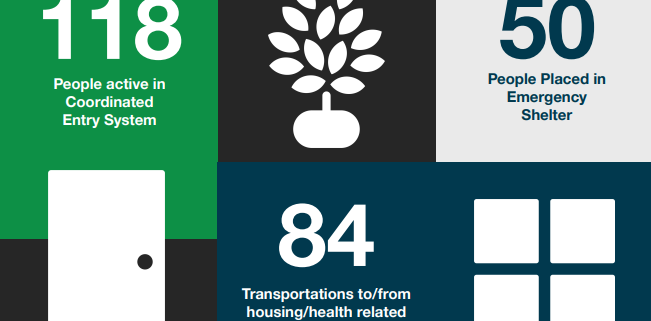




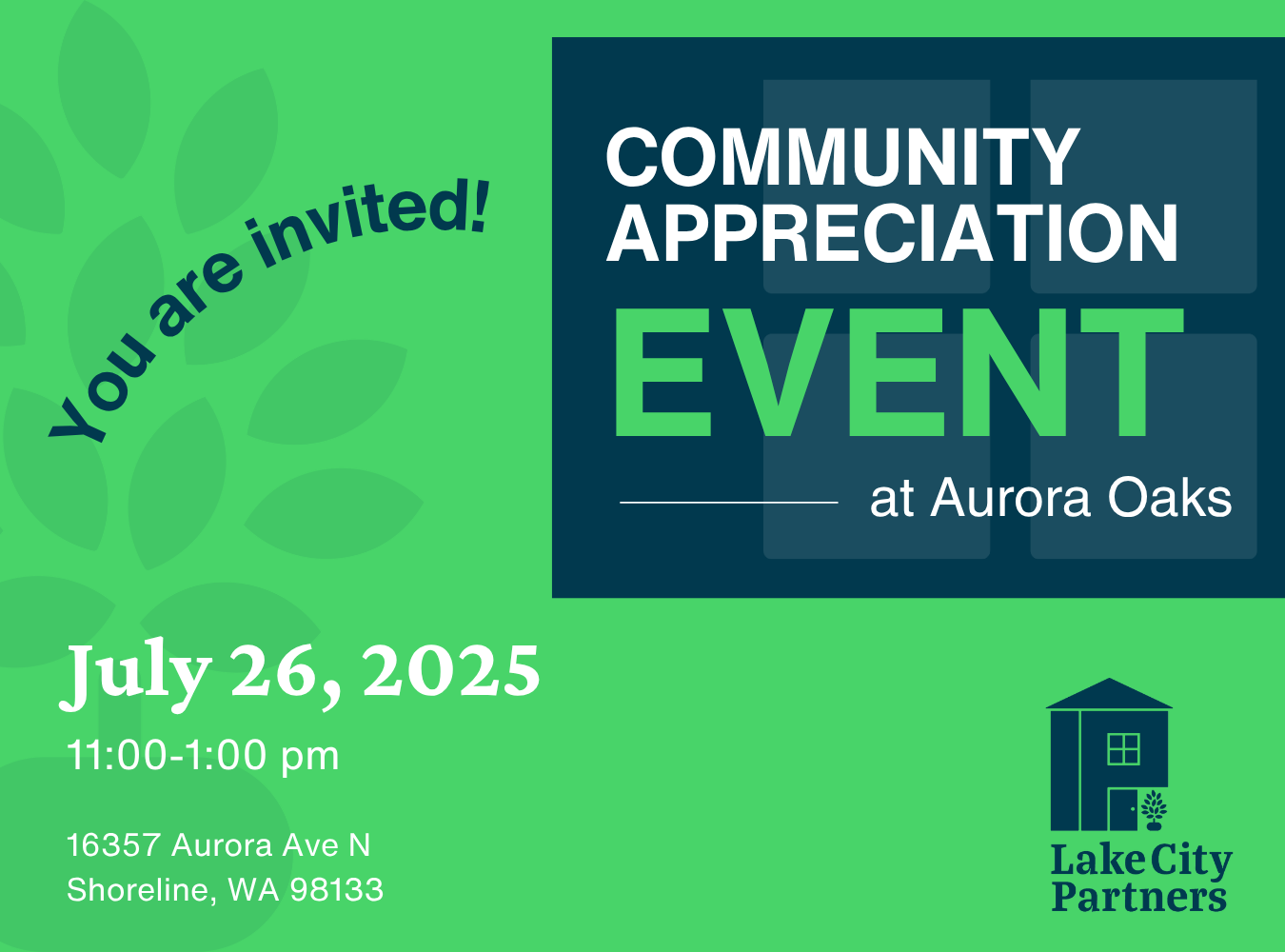
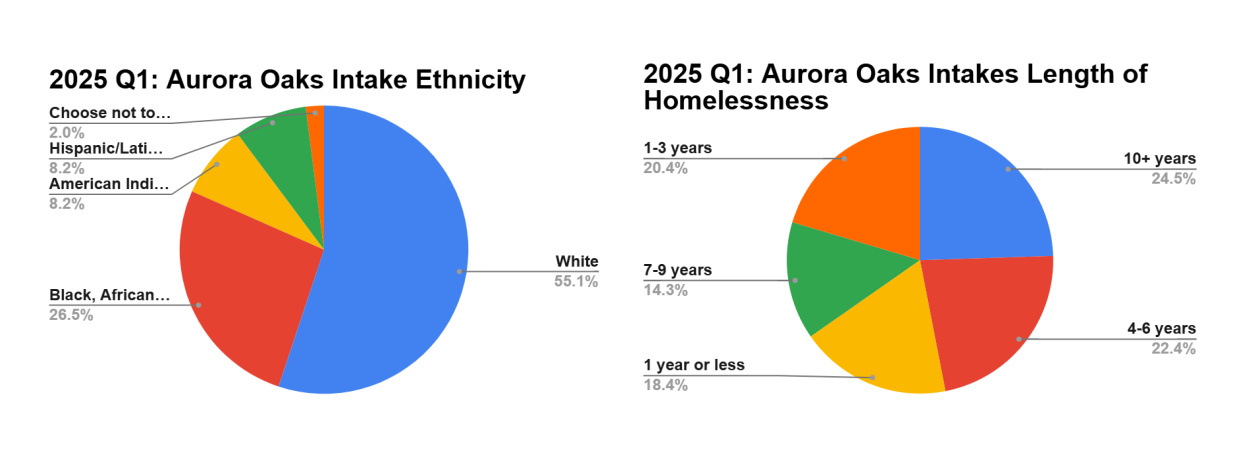



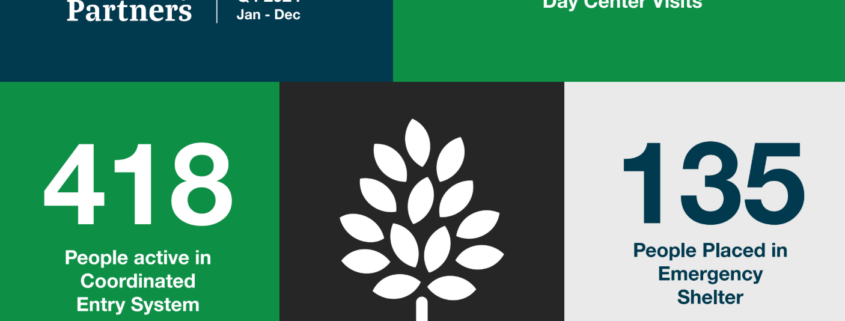

 You are invited to the Valentine’s Day Opening Ceremony of the Kenmore Senior Women’s Shelter on February 14, 2025!
You are invited to the Valentine’s Day Opening Ceremony of the Kenmore Senior Women’s Shelter on February 14, 2025!